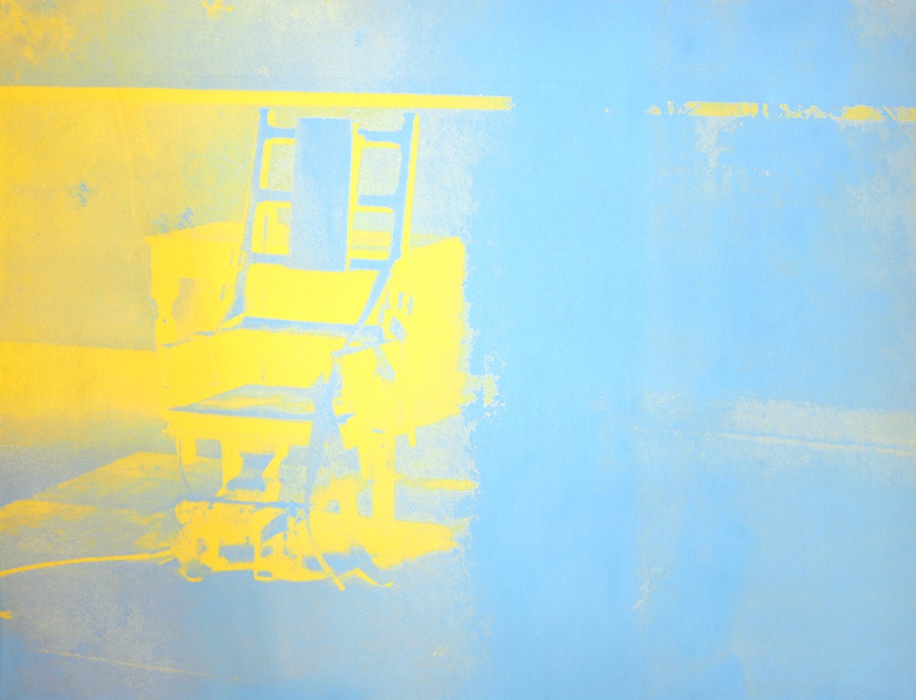Andy Warhol began the Electric Chair series in 1964, it quickly emerged as a striking testament to his artistic innovation and social commentary. Departing from convention, Warhol hand-printed images onto canvas and paper. The Electric Chair series scrutinizes society's desensitization to violence, challenging viewers to confront uncomfortable truths

The Electric Chair is a medium-sized canvas, meticulously screen-printed with silver acrylic paint. At the center of the composition lies an unoccupied electric chair positioned within a stark, empty room. The chair's distinctive features—a high-backed frame and leather straps at its foot and sides—are captured with precision. Coiled at the chair's base, a cable hints at its ominous function. Behind the chair, a modest wooden table rests against the rear wall, while a scarcely discernible sign reading 'Silence' occupies the composition's upper right corner.
Warhol's innovative printing process, as described by gallerist Frayda Feldman and art publisher Jörg Schellmann, retained the graininess and immediacy of mass media images, infusing each work with imperfections and variations, imparting a distinct handmade quality. Electric Chair draws its inspiration from a press photograph dated January 13, 1953, capturing the death chamber at Sing Sing Prison, where Julius and Ethel Rosenberg faced execution for espionage during World War II.
Reflecting on his groundbreaking printing method in 1980, Warhol highlighted its simplicity and unpredictability, reveling in the subtle nuances it brought to each iteration of the same image. This marked a significant shift in his artistic practice, ushering in a new era of experimentation and exploration.

Electric Chair holds a significant place within Warhol's Death and Disaster series, initiated in 1962. Departing from earlier depictions of car crashes and suicides sourced from newspaper imagery, Warhol delved into the impact of repetitive reproduction, questioning the public's desensitization to violence. Through the repetition of abhorrent images as art, Warhol aimed to underscore society's indifference to tragedy.
The absence of human figures in Electric Chair contrasts sharply with Warhol's previous works in the Death and Disaster series, imbuing the composition with a sense of stark emptiness and silence. Art historian Neil Printz aptly characterizes it as visually sober and emotionally understated, portraying death as a void.

Initial critiques of Warhol's Death and Disaster series, such as those voiced by Thomas Hess, lamented its purported undermining of artistic integrity. However, subsequent analysis suggests that Warhol's repetitive imagery served as a poignant commentary on media saturation, reconnecting viewers with the gravity of the events depicted.
Through his innovative approach to image reproduction and thought-provoking subject matter, Warhol challenges viewers to confront the complexities of violence, desensitization, and the role of art in shaping collective consciousness.
Discover our selection of Andy Warhol screenprints for sale and contact our New York & London galleries via info@guyhepner.com for further details. Looking to sell? speak to our team on how to sell Andy Warhol prints.
April 8, 2024

